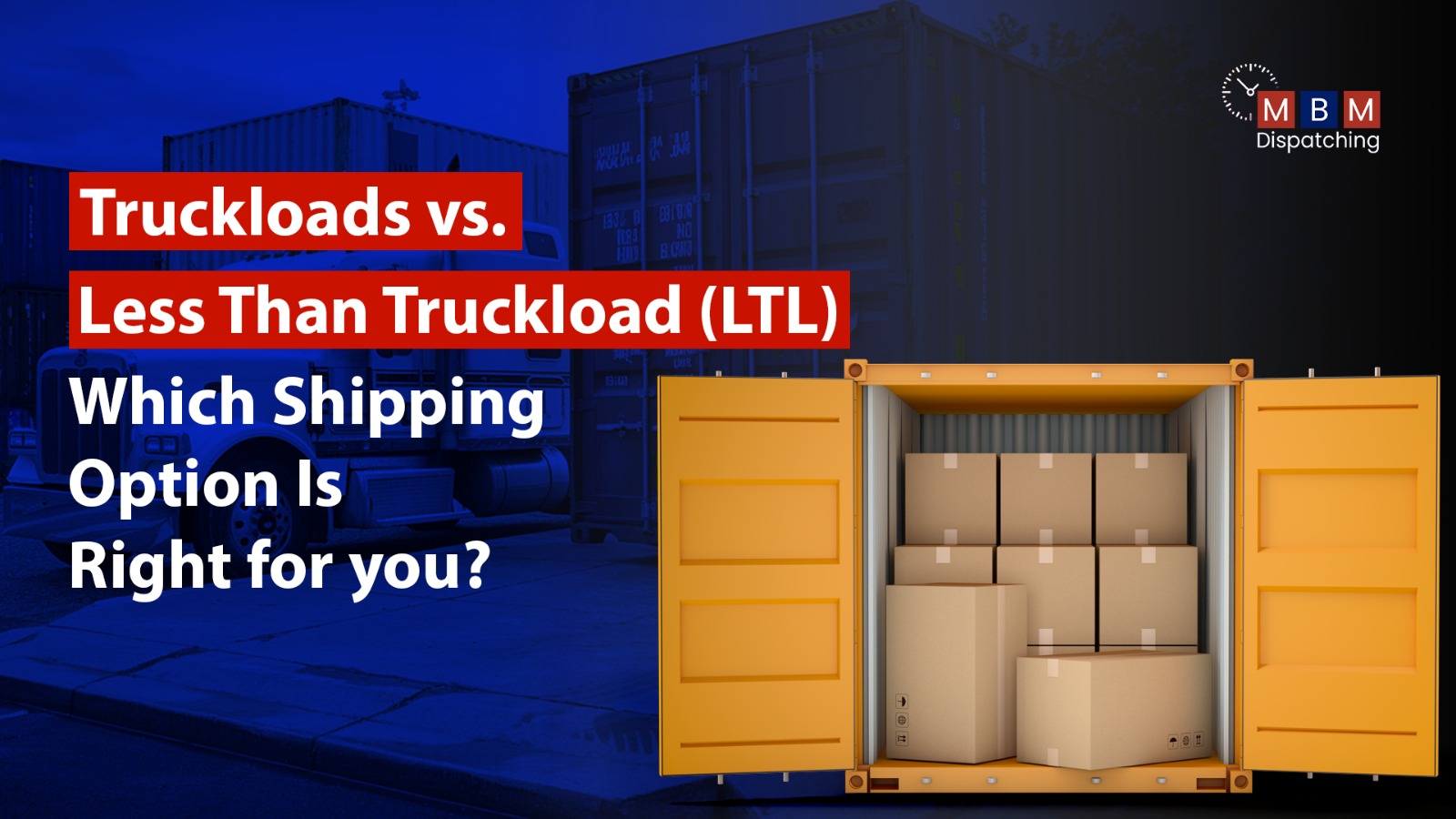Introduction
Rising freight fees and the need for efficient shipping are major concerns for businesses, especially in a competitive logistics industry. Many logistics companies face challenges deciding between truckload (TL) and less than truckload (LTL) options for their cargo shipments.
Choosing the wrong shipping option could mean higher costs, delayed deliveries, and even damaged goods. For example, a trucking company might incur unnecessary expenses by sending a half-empty truck across the country.
In this guide, we break down TL and LTL shipping options, comparing their features, costs, and suitability for various business needs. Understanding these distinctions will empower you to make informed choices and optimize your supply chain management.
What Are Truckloads (TL) and Less Than Truckload (LTL)?
In the world of logistics services, Truckload (TL) shipping refers to using the entire truck capacity for a single shipment. This is typically more cost-effective for large shipments that fill an entire truck. TL is preferred by logistics providers handling bulk orders and high-volume shipments, as it allows direct transport from origin to destination without stops.
On the other hand, Less Than Truckload (LTL) shipping consolidates multiple smaller shipments into one truck. Ideal for businesses that don’t have enough volume to fill a truck, LTL is a shared transportation model that enables cost-sharing among different shippers. LTL services are widely used by smaller businesses and third-party logistics providers that manage diverse customer needs.
Key Differences Between Truckloads (TL) and Less Than Truckload (LTL)
1. Shipping Cost
The cost of transport services is a critical factor for any logistics business. TL costs are generally fixed, making them suitable for high-volume shipments. LTL costs, on the other hand, are shared among multiple shippers, which is cost-effective for smaller shipments. For logistics management teams, optimizing these costs is crucial for efficient logistics chain management.
2. Transit Time
For logistics companies focused on speed, truckload shipping is often faster as it operates on a direct route from origin to destination. LTL, however, involves multiple stops, adding to transit time. Tracking and logistics solutions can help manage delays and provide transparency for both options.
3. Shipment Size and Weight
TL is ideal for large shipments where the entire truck is required, while LTL is best for smaller loads that don’t need a full truck. Understanding these differences can assist a logistics provider in choosing the right service based on shipment volume.
4. Handling and Security
In TL shipping, goods are less likely to be handled during transit, reducing the risk of damage. LTL shipments, however, are handled multiple times due to shared loads, increasing the likelihood of damage. This is an important consideration for businesses shipping fragile or valuable goods.
Advantages of Truckload (TL) Shipping
- Faster Transit Times with Direct Routes
TL shipments go directly from point A to point B, making it a faster option. For businesses in need of urgent deliveries, such as supply chain management in operations management, TL shipping can be a game-changer. - Reduced Handling Risk Since TL shipments are not shared, there’s minimal handling involved, reducing the chances of damage. This is particularly beneficial for high-value cargo transport that demands extra security.
- Ideal for High-Volume Shipments If your business deals with large volumes or heavy goods, TL shipping is a perfect match, providing a cost-effective solution for logistics transportation needs.
- Control Over Scheduling With TL shipping, businesses can control departure times and routes, offering more flexibility for logistics management teams looking to optimize transportation and logistics schedules.
Advantages of Less Than Truckload (LTL) Shipping
- Lower Costs for Small Shipments LTL is a budget-friendly choice for smaller loads, making it ideal for businesses that don’t require a full truck. The shared truck space allows smaller businesses to ship affordably without overpaying for unused space.
- Flexible Shipment Sizes LTL is designed for businesses that ship smaller quantities regularly. This flexibility is ideal for companies that need consistent shipping but don’t have high-volume needs.
- Environmentally Friendly By consolidating shipments, LTL reduces the number of trucks on the road, which leads to fewer emissions and is more eco-friendly. This aligns with sustainable goals in logistics & services.
- Ideal for Regular, Smaller Deliveries LTL works well for businesses that need frequent, smaller shipments. For instance, logistics and supply chain operations that manage e-commerce deliveries can benefit from LTL’s cost structure.
When to Choose Truckload (TL) Shipping
Choosing TL shipping is beneficial if your shipment is large, time-sensitive, or contains fragile items. TL is ideal for:
- High-volume manufacturing orders
- Retail distribution centers needing direct delivery
- Industries that prioritize speed and security, like electronics or pharmaceuticals
When to Choose Less Than Truckload (LTL) Shipping
LTL shipping is best for businesses with smaller, less time-sensitive shipments. Ideal use cases include:
- E-commerce businesses needing regular but smaller deliveries
- Retailers shipping limited stock to multiple locations
- Small to medium enterprises managing lower volume shipment
Other Factors to Consider When Choosing Between TL and LTL
- Geographic Considerations Distance and regional routes can influence shipping decisions. Longer routes may benefit from TL’s directness, while shorter distances might be cost-effective with LTL.
- Frequency and Predictability For frequent shipments, LTL provides flexibility without requiring a full truck. Logistics industry companies can negotiate contracts with third-party logistics providers for better pricing.
- Leveraging Third-Party Logistics (3PL) Working with a third-party logistics provider offers flexibility and expertise in both TL and LTL. 3PLs can help logistics business management teams streamline operations and reduce freight fees.
How to Make the Most of TL and LTL Shipping Options
- Partner with Reliable Logistics Providers Select transport companies with a solid track record in logistics and supply chain management. Building relationships with providers can result in better rates and improved service quality.
- Use Tracking Technology Tracking and logistics systems provide real-time updates on shipments, helping businesses manage timelines and avoid delays, especially with LTL’s multiple stops.
- Negotiate Contracts for Volume Discounts For frequent shippers, negotiating long-term contracts can result in cost savings for both TL and LTL options. This helps businesses control trucking pricing and reduce operational costs.
Conclusion
Both truckload (TL) and less than truckload (LTL) shipping have their advantages and are essential components of the logistics chain management. The choice between TL and LTL largely depends on your shipment size, budget, and urgency. Large, high-priority shipments are best suited for TL, while smaller, more flexible shipments align well with LTL.
Choosing the right option can reduce freight fees and enhance the efficiency of your supply chain management. For businesses, consulting a logistics provider can clarify which solution fits best with operational needs. Whether you’re in logistics services, supply chain management and logistics management, or an e-commerce business, understanding these options will help optimize your shipping strategy and ensure cost-effective transportation.

